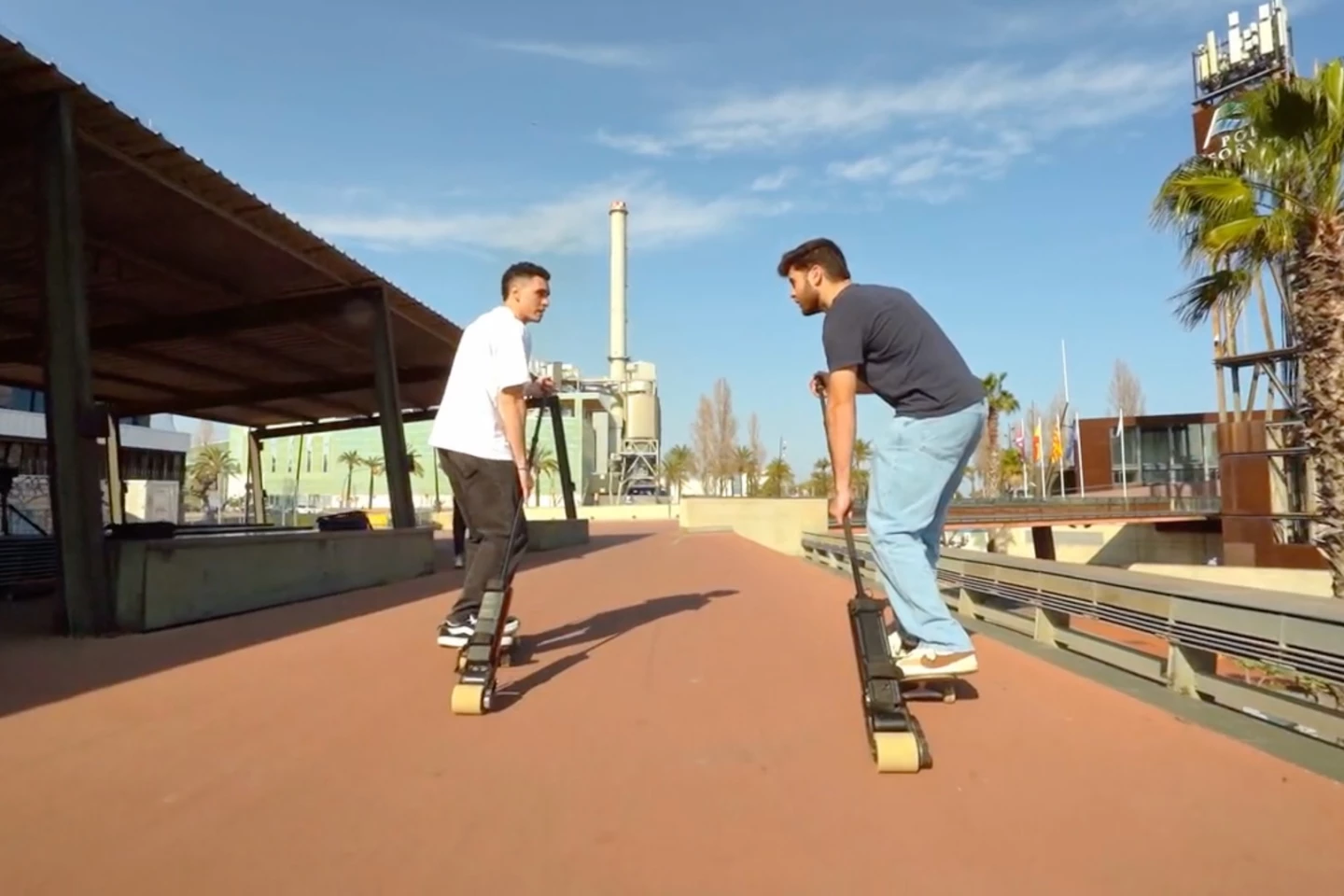If you sometimes want an electric boost while skateboarding, but don't want an electric skateboard, then you might like REM. It's essentially a handheld "power stick" that works completely independent of the user's board.
Currently the subject of a Kickstarter campaign, REM is being developed by Barcelona-based startup Limitless Propulsions. CEO/founder Marc Esparbé Vallhonrat first got the idea when he spotted a longboarder using a rubber-tipped wooden pole to push themselves along, sort of like a land-going standup paddle boarder.
REM is likewise a stick of sorts, although it takes the form of a carbon fiber shaft with a throttle at the top and an aluminum-framed single-wheel propulsion unit at the bottom. Twisting the knob-shaped throttle activates the unit's 3,000W brushless motor, which spins up the wide polyurethane wheel via a belt drive mechanism.

The setup has a top speed of 40 km/h (25 mph) along with a complete lack of brakes – the onus is upon users to stop themselves as they normally would, without a motor.
Power is provided by a 44.4V lithium battery which is claimed to be good for a range of about 20 km (12 miles) per charge.
Of course, if the battery runs out, the skateboard can still be used on its own. In fact, one of the big selling points of REM is the fact that it leaves the user's board light, sleek and unaltered, instead of being weighed down and cluttered with a motor and battery.

When REM isn't in use, its shaft can be pulled apart into two pieces which get Velcro-strapped to the propulsion unit. The 5-kg (11 lb) package can then be carried via an integrated fabric handle.
Because it is a rather unconventional form of electrified transit, REM might not meet with the approval of all municipalities. Prospective backers are advised to check their local regulations before ordering.
Assuming the device reaches production, a pledge of €799 (about US$857) will get you one – the planned retail price is €1,200 ($1,287). You can see it in action, in the following video.
The somewhat similar Veelo, which pulled riders instead of pushing them, didn't reach its crowdfunding goal.
Source: Kickstarter





